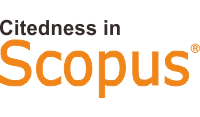The Development of Tourism Products in Sangiran Tourism Village, Krikilan Village, Kalijambe District, Sragen
DOI:
https://doi.org/10.35313/jtospolban.v2i3.63Keywords:
Tourism Product; Rural Tourism; Tourism VillageAbstract
Sangiran Tourism Village or Krikilan Village is one of the tourist villages that has unique geology, being part of the Sangiran Cultural Conservation area which has been designated as a UNESCO World Cultural Heritage. Therefore, tourism development in Sangiran Tourism Village should not be carried out arbitrarily and planning is needed through the development of appropriate tourism products. This study uses a descriptive method and a qualitative approach to find out the actual situation and phenomena. The results obtained from this study are the actual conditions of tourism products in the Sangiran Tourism Village where tourism in the Sangiran Tourism Village currently only utilizes the actual attraction in the form of the Sangiran Ancient Human Museum. The potential possessed by the Sangiran Tourism Village is the natural potential in the form of geological conditions, landscapes, and rural life that are still maintained. Some of the suggestions made are the use of potential tourist attractions, the preparation of tour packages, and the preparation of a code of ethics for tourism development.
References
Aref, F.; Gill, S. S. (2009), Rural tourism development through rural cooperatives, Nature and Science, Vol. 7, No. 10, pp. 68-73.
Frochot, I. (2005). A Benefit Segmentation Of Tourists In Rural Areas: a Scottish perspective. Tourism Management, 26, 335-346.
Hadiwijoyo. (2012). Perencanaan Pariwisata Perdesaan Berbasis Masyarakat (Sebuah Pendekatan Konsep). Yogyakarta: Graha Ilmu.
Inskeep, E. (1991). Tourism Planning - An Integrated and Sustainable Approach. New York: Van Nostrand Reinhold.
Knowd, I. (2001). Rural Tourism Panacea and Paradox. Geography Teachers' Curriculum Workshop hosted by the University of Western Sydney. Sydney: UWS Hawskesbury.
Kulcsar, N. (2009), Rural tourism in Hungary: the key of competitivenes, Proceedings of FIKUSZ ’09 Symposium for Young Researchers, Faculty of Econmics, Budapest, Hungary, pp. 121-127.
Lane, B. (2009), Rural Tourism: An Overview, in The SAGE Handbook of Tourism Studies, (Ed. Tazim Jamal and Mike Robinson), SAGE Publications, pp. 354-370
Moh. Nazir (2011). Metode Penelitian. Bogor: Ghalia Indonesia
Muljadi, A. J. (2012). Kepariwisataan Dan Perjalanan. Jakarta: PT. Raja Grafindo Persada.
Nulty, P.M. (2004). Keynotes address WTO Seminar on Rural Tourism in Europe.Belgrade (Serbia & Montenegro) 24 & 25 June 2004.
Octaviany, V. (2016). Pengaruh Kualitas Produk Pariwisata Terhadap Keputusan Berkunjung Di Bale Seni Barli-Kota Baru Parahyangan. Tourism Scientific Journal, 1(2), 184. https://doi.org/10.32659/tsj.v1i2.11
Sukmadinata. 2011. Metode Penelitian Pendidikan. Bandung: Remaja Rosdakarya
UNWTO. (2017). International Rural Tourism Development: An Asia Pacific Perspective.Madrid: Calle Capitan Haya.
Yoeti, O. A. (2013). Pemasaran Pariwisata. Bandung: CV Angkasa.
Zappiano, V. (2005). Caribbean Tourism and development: an overview. Discussion paper No.65. Cosenza: European Centre for Development Policy Management.
Downloads
Published
Issue
Section
License
Copyright (c) 2022 Mega Aldora, Lilis Jayanti, Jacob Ganef Pah, Eka Paramita Marsongko, Yanthi Adriani

This work is licensed under a Creative Commons Attribution 4.0 International License.



.png)















